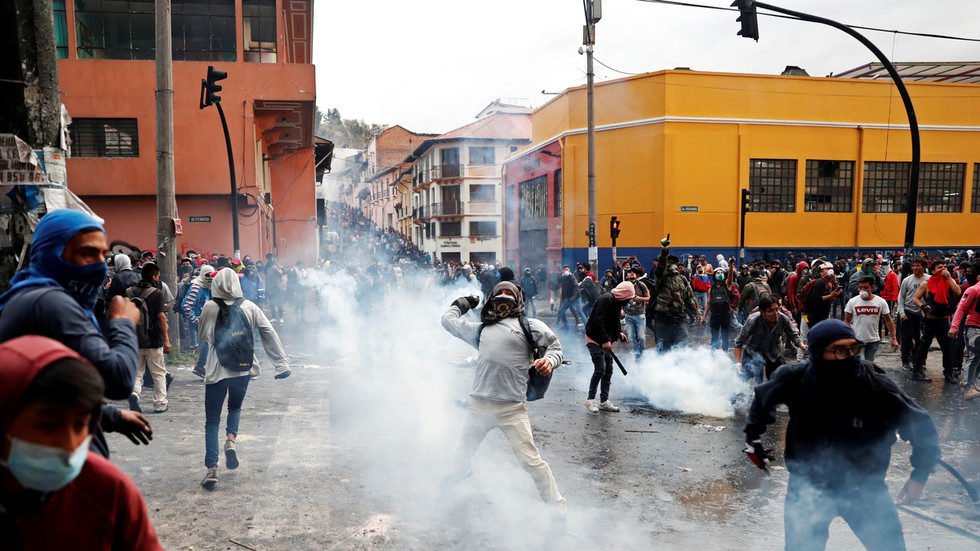
© Reuters/KS
Chaotic mass demonstrations are underway in Ecuador following a spate of austerity cuts tied to a recently implemented IMF deal. Police have unleashed tear gas on protesters, while the government has declared a state of emergency.
By Monday, some 477 people had been arrested after five days of heated demonstrations, in which protesters blocked roads and clashed with police on the streets of Quito.
The demonstrators - many of them indigenous peoples - met a forceful police response, including tear gas, billy clubs and armored vehicles, with officers pursuing protesters on horseback and motorbike.
After the clashes, "the streets of Quioto looked more like a warzone with rocks, bottles, and tear gas cartridges scattered everywhere," RT Spanish correspondent Nicolas O'Donovan reported from the Ecuadorian capital. Covering the events proved a risky endeavor for him and his crew, who got dosed by tear gas as police were dispersing demonstrators.
President Moreno announced on Monday evening that he would no longer govern from Quito, and would instead relocate to the southwestern city of Guayaquil, hoping to avoid the brunt of the demonstrations.
Late last week, he hoped to end the gatherings with a 60-day national emergency decree, temporarily rescinding press freedoms and the right to public assembly, but the marches have not abated.
The days of rage were prompted by a package of spending cuts introduced by the Moreno administration last week, particularly its elimination of state fuel subsidies.
The fuel prices more than doubled, taking a disproportionate toll on poor and indigenous communities.The new economic measures come in preparation for a $4.2 billion loan deal with the International Monetary Fund (IMF) approved in March. IMF loan agreements often require recipient nations to reform internal economic policies before they are approved.
On Monday, as protesters made their way toward Quito's presidential palace, where Moreno was expected to give an address, officials and journalists were suddenly ejected from the building by the military, reportedly as a security measure. Some were caught up in the massive police parameter around the palace, which included barbed wire and fences, and left stranded for some time with no way to leave.
While security forces continued to build up defenses around the palace, where
armored vehicles could be seen arriving late on Monday.
The president also slammed the protests as a "coup attempt" carried out by "corrupt" lawmakers affiliated with his predecessor and one-time ally, Rafael Correa and Venezuela's Nicolas Maduro.
Despite the crackdown, the protests show no sign of fading. Indigenous groups say they expect around 20,000 more demonstrators to arrive in Quito by Tuesday, many of them voyaging from southern parts of the country to partake in the protests. Videos have appeared on social media showing throngs of protesters as they marched toward the city.

Reader Comments
to our Newsletter